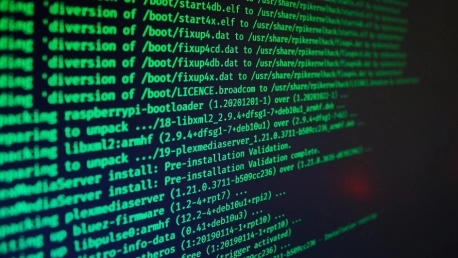Artificial intelligence (AI) is rapidly transforming, bringing many benefits to our daily lives, from personalized recommendations to self-driving cars. At the same time, hackers also leverage AI to make their attacks more sophisticated and challenging to detect. In recent years, AI has become a powerful tool for cybercriminals, enabling them to launch targeted attacks.
Unfortunately, as AI evolves, so will the use of it for cyber crimes. To secure their data, organizations, and individuals must understand how AI and machine learning (ML) are used by hackers, and how they can protect themselves.
This article will explore how hackers use AI to make their attacks more effective and how to minimize and avoid these threats.
Automated Attacks
Traditionally, cybercriminals would need to manually craft attacks, which requires significant time and effort. However, AI-powered tools can now automate the process of identifying vulnerabilities and launching attacks, making it easier for hackers to target their victims.
Automated attacks can take many forms, such as phishing attacks, ransomware attacks, and malware attacks. These attacks can be tailored to specific victims, making them more effective and challenging to detect.
Improved Social Engineering
Another way hackers use AI is by improving their social engineering techniques. Social engineering describes using deception to manipulate individuals into divulging sensitive information or taking actions that are not in their best interests. AI can help hackers identify and exploit vulnerabilities in human psychology, making social engineering attacks more successful.
For example, AI-powered chatbots can simulate human interactions and gather sensitive information from unsuspecting victims. By analyzing the data collected from these interactions, hackers can tailor their attacks to be more convincing and effective.
Sophisticated Phishing Attacks
Phishing attacks are one of the most common types of cyber-attacks. These attacks are becoming increasingly sophisticated through AI. Phishing attacks typically involve sending emails or messages that appear to be from legitimate sources, such as banks or social media platforms, with the aim of tricking victims into providing sensitive information or downloading malware.
AI-powered tools can create highly realistic phishing emails that are difficult to distinguish from legitimate ones. By analyzing the language and writing style of legitimate emails, AI can produce phishing emails that are almost impossible to detect.
“Security experts have noted that AI-generated phishing emails have higher rates of being opened—tricking possible victims to click on them, and thus, generating more attacks than manually crafted phishing emails,” said Brian Finch, co-leader of the cybersecurity, data protection & privacy practice at law firm Pillsbury Law.
Advanced Malware Detection Evasion
Malware is a type of software designed to damage or disrupt computer systems. Hackers use AI to create advanced malware that can evade traditional detection methods. For example, hackers can use AI to develop polymorphic malware that changes its code each time it is executed, making it more difficult for security systems to detect.
In addition, AI can analyze security systems and identify weaknesses that can be exploited. This can help hackers create more effective malware to bypass security systems undetected.
DDoS Attacks
Distributed denial-of-service (DDoS) attacks are a type of cyber-attack that involves overwhelming a target system with traffic from multiple sources, causing it to crash or become unavailable. Hackers use AI to create more effective DDoS attacks by analyzing the target system’s weaknesses and identifying the most effective ways to overload it.
Cybercriminals can also employ AI to create more sophisticated botnets—networks of infected computers that can launch DDoS attacks. By analyzing data from previous attacks, AI can create more effective botnets to evade detection and be more challenging to solve.
Organizations and Individuals Must Be Aware of AI in Cyber Crime
AI has become a powerful tool for cybercriminals, enabling them to launch more sophisticated and targeted attacks. Hackers use AI to automate attacks, improve social engineering techniques, create more advanced malware, and launch optimized DDoS attacks. As the use of AI by hackers continues to grow, individuals and businesses must take steps to protect themselves from these threats. This includes keeping software up to date, using strong passwords, enabling two-factor authentication, and being cautious of suspicious emails and messages.
Furthermore, organizations should invest in cybersecurity measures that incorporate AI and machine learning to help detect and prevent attacks. AI-powered tools can help to identify patterns and anomalies in network traffic and behavior, enabling security systems to detect and respond to attacks more effectively.








